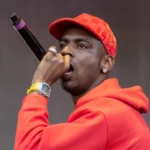The Dominican Republic is home to a vibrant and diverse rap scene that is often overlooked and underrated. It is a place where rap and hip-hop have grown and developed over the years to become a major part of the country’s culture and identity. This music genre has had a huge influence on the Dominican Republic’s youth and has become a way for them to express their ideas and emotions.
In this article, we will explore the Dominican Republic’s rap scene and discover the stories behind the music. We will learn about the country’s top rappers, their unique styles, and the themes they explore in their songs. We will also look at the impact this music has had on the lives of the Dominican people and how it has helped to shape the country’s culture. Find the best rapper on this link:
https://rap-quotes.com/jojoy-toca-boca/.
Uncovering the Hottest New Talent from the Dominican Republic
The Dominican Republic has become a hotbed for up-and-coming talent in recent years. With an array of creative and innovative minds, this Caribbean nation is becoming increasingly known for its vibrant music, art, and literature scenes.
From hip-hop to traditional merengue, the Dominican Republic is home to a wide variety of musical genres. One of the most popular and influential hip-hop artists to emerge in recent years is El Alfa, who has become known for his unique blend of traditional Dominican sounds with modern hip-hop beats.
The Dominican Republic’s art scene is also rapidly developing. Young artists like Ruben Ubiera and La Pandilla are making a name for themselves in the international art world, with their bold, vibrant work being shown in galleries in cities like New York, London, and Madrid.
Finally, the Dominican Republic is known for its rich literary heritage. Writers like
Junot Diaz, Julia Alvarez, and Edwidge Danticat have been making waves in the literary world, with their works being published in multiple languages and gaining worldwide recognition.
The Dominican Republic is a nation of vibrant culture and burgeoning talent. From music to art to literature, it is quickly becoming known as a destination for discovering the hottest new talent.
How Does Radio Promote the Dominican Republic’s Rap Scene?
The role of radio in promoting Dominican rap is crucial in elevating the country’s rap scene. Radio provides a platform for local artists to showcase their talent, reach new audiences, and gain recognition. Through interviews, airplay, and promotions, radio significantly contributes to the growth and success of Dominican rap.
Exploring the History of Dominican Rap Music
Dominican rap music is an essential part of the country’s culture and identity. It has been around for over two decades, with its roots in the late 1980s. During this time, the music was heavily influenced by the hip hop sounds of the United States and Puerto Rico.
In the 1990s, Dominican rap music began to take on a more distinctively Dominican flavor. Rappers like El General, El Alfa, and El Chivo were among the first to incorporate traditional Dominican music into their songs. These pioneers helped to establish the genre as a uniquely Dominican style of rap.
In the 2000s, Dominican rap music began to gain more international recognition. This was due in part to the rise of artists like Don Miguelo, who had a hit single in 2009 called “Caballito de Palo.” This song was an instant hit in the Dominican Republic and was quickly picked up by radio stations around the world.
Today, Dominican rap music is becoming more popular than ever. Artists like El Alfa, El Chivo, and Don Miguelo continue to be major influences in the genre. Additionally, the emergence of new artists like Bad Bunny and Eladio Carrion has helped to bring a new wave of energy to the genre.
The history of Dominican rap music is a testament to the country’s rich musical culture. It has evolved from its early days as a hybrid of American and Puerto Rican hip hop to a genre that is distinctly Dominican. As the genre continues to grow and gain international recognition, it is clear that Dominican rap music will remain an important part of the country’s culture and identity for years to come.
Analyzing the Impact of the Dominican Rap Scene on Caribbean Music
The Dominican Republic has long been known for its vibrant music culture, but in recent years the rap scene in particular has taken center stage and achieved international recognition. This is due in part to the success of artists such as El Alfa, whose unique blend of traditional Dominican rhythms and modern hip-hop has become popular all over the world. The rise of Dominican rap has had a significant impact on the Caribbean music landscape, both in terms of sound and influence.
The Dominican rap scene is characterized by an eclectic mix of musical styles, incorporating elements of traditional genres like bachata and merengue as well as hip-hop and reggaeton. This fusion of sounds has given the genre a distinct flavor that has resonated with listeners all over the Caribbean and beyond. Additionally, the lyrical themes of Dominican rap often reflect the realities of life in the Dominican Republic, providing an insightful view into the country’s culture and politics.
Beyond its sonic influence, the success of Dominican rap has also had a major impact on the wider Caribbean music industry. The genre’s popularity has provided a platform for other Caribbean artists to showcase their music and reach new audiences. Furthermore, the emergence of Dominican rap has also encouraged a greater appreciation of traditional Caribbean genres, as the two styles have often been blended together in new and innovative ways.
In conclusion, the rise of the Dominican rap scene has been an important development in Caribbean music. The genre has had a significant impact on both the sound and the industry of Caribbean music, providing a platform for new and established artists alike as well as introducing a unique blend of traditional and modern genres.



